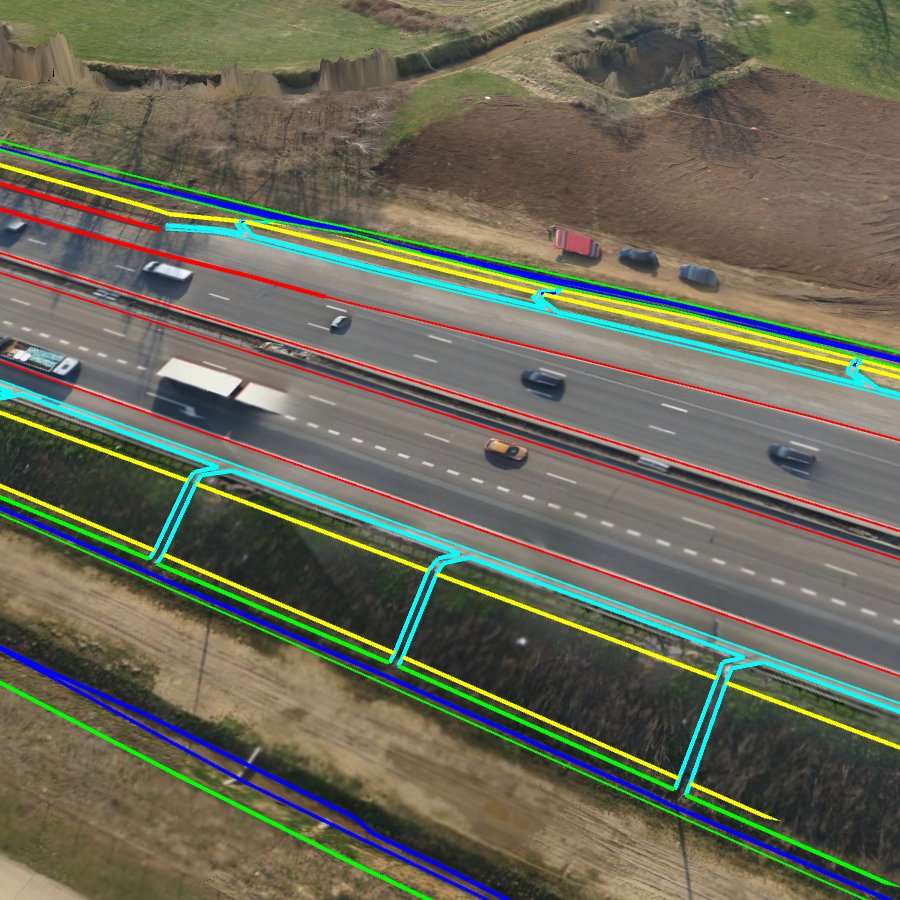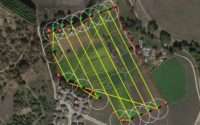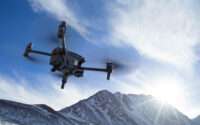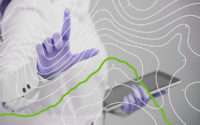Best Drone Survey Company in India
Are you looking for a reliable and best drone survey company in India? Do you want to get high-quality aerial data for your project? If yes, then you have come to the right place. In this article, we will tell you everything you need to know about drone surveys, their benefits, how to choose a drone survey company, and some case studies of drone surveys in India. We will also answer some frequently asked questions about drone surveys.
What is a drone survey?
A drone survey is a method of collecting aerial data using unmanned aerial vehicles (UAVs) or drones. Various sensors, including cameras, LIDAR, thermal, multispectral, etc., equip drones to capture images and measurements of the ground from different angles and altitudes. Software tools can process and analyze the data collected by drones to generate various outputs, such as orthophotos, point clouds, digital elevation models, 3D models, contour maps, etc.

Drone surveys are widely used for various applications, such as:
- Aerial photogrammetry: This is the process of creating accurate maps and measurements from aerial images. Photogrammetry can be used for land surveying, urban planning, agriculture, forestry, mining, archaeology, etc.
- Aerial videography: This is the process of capturing high-resolution videos from the air. Videography can be used for marketing, tourism, entertainment, inspection, monitoring, etc.
- LIDAR survey: This is the process of using laser pulses to measure the distance and reflectivity of objects on the ground. LIDAR can create high-density point clouds that can be used for topographic surveying, terrain modeling, vegetation analysis, infrastructure mapping, etc.
- Assets inspection and monitoring: This is the process of using drones to inspect and monitor various assets, such as buildings, bridges, pipelines, power lines, solar panels, wind turbines, etc. Drones can provide real-time data and images that can help detect defects, damages, leaks, corrosion, etc.
- Thermal mapping: This is the process of using thermal cameras to measure the temperature and heat signatures of objects on the ground. Thermal mapping can be used for energy efficiency, fire detection, wildlife management, etc.
- GIS services: This is the process of using drones to collect and integrate geospatial data for various purposes, such as environmental management, disaster response, land administration, etc.
- BIM: This is the process of using drones to create and update building information models (BIM) that can help in the design, construction, and maintenance of buildings and infrastructure.
- Satellite data procurement and processing: This is the process of using drones to complement and enhance satellite data by providing higher resolution, accuracy, and timeliness. Drones can also fill the gaps in satellite coverage and provide data in areas where satellite imagery is not available or suitable.
The benefits of using drone surveys
Drone surveys have many advantages over traditional surveying methods, such as:
- Cost-effectiveness: Drone surveys are cheaper than hiring manned aircraft or ground surveyors, as they require less equipment, fuel, and manpower. Drone surveys can also reduce the need for expensive and time-consuming field visits, as they can provide accurate and up-to-date data remotely.
- Speed and efficiency: Drone surveys are faster than conventional surveying methods, as they can cover large areas in a short time. Drone surveys can also provide near-real-time data and images, which can help in decision-making and problem-solving.
- Safety and accessibility: Drone surveys are safer than manned surveying methods, as they can avoid the risks of flying in hazardous or restricted areas, such as mountains, forests, deserts, war zones, etc. Drone surveys can also access areas that are difficult or impossible to reach by ground surveyors, such as rooftops, steep slopes, wetlands, etc.
- Quality and accuracy: Drone surveys can provide high-quality and high-resolution data and images, as they can fly closer to the ground and capture more details than satellite or aerial imagery. Drone surveys can also provide more accurate and consistent data, as they can eliminate human errors and biases.
- Flexibility and versatility: Customizing and adapting drone surveys to different needs and purposes is possible as they can utilize various sensors, cameras, and software tools to capture and process different types of data. Conducting drone surveys at different times and weather conditions is possible, as they can operate in low-light, cloudy, or windy situations.
How to choose a drone survey company
If you are looking for a drone survey company in India, you should consider the following factors before making your decision:
- Experience and reputation: You should choose a drone survey company that has a proven track record and a good reputation in the industry. You should check their portfolio, testimonials, and reviews to see the quality and scope of their work. You should also verify their credentials, certifications, and licenses to ensure their legitimacy and professionalism.
- Services and solutions: You should choose a drone survey company that offers a wide range of services and solutions that suit your needs and goals. You should check their capabilities, expertise, and equipment to see what types of data and outputs they can provide. You should also check their software, platforms, and formats to see how they can deliver and share the data and images with you.
- Pricing and value: You should choose a drone survey company that offers competitive and transparent pricing and value for your money. You should compare their quotes, packages, and discounts to see what they include and exclude from their services. You should also check their terms and conditions, warranties, and guarantees to see what they cover and protect in case of any issues or disputes.
- Customer service and support: You should choose a drone survey company that provides excellent customer service and support throughout the project. You should check their communication, responsiveness, and availability to see how they can handle your queries, requests, and feedback. Checking their after-sales service and support is essential to understand how they can assist you with any problems or questions after completing the project.
Case studies of drone surveys in India
Here are some examples of how drone surveys have been used for various projects and purposes in India:
- Aerial Mapping: [Aerial Mapping | Drone LiDAR Survey | Photogrammetry | Surveillance | Geospatial Service in India] is a leading drone survey company in India that provides aerial mapping services using photogrammetry and LIDAR technologies. They have successfully completed projects for various sectors, such as mining, agriculture, forestry, infrastructure, etc. They have also provided satellite data procurement and processing services for various clients, such as ISRO, NRSC, etc.
- Assets Inspection and Monitoring: [Drone Survey and Mapping | India] is a drone survey company in India that specializes in asset inspection and monitoring services using drones. They have conducted inspections and monitoring for various assets, such as solar plants, wind farms, power lines, pipelines, etc. They have also provided thermal mapping and videography services for various applications, such as fire detection, energy efficiency, etc.
- BIM: [Drone survey for Mining in India, IBM Compliances for Mining] is a drone survey company in India that offers BIM services using drones. They have created and updated BIM models for various projects, such as mining, construction, etc. They have also provided GIS services and topographic surveys for various clients, such as IBM, NHAI, etc.
FAQs about drone surveys
Here are some frequently asked questions and answers about drone surveys:
- What is the difference between aerial photogrammetry and LIDAR survey?
Aerial photogrammetry and LIDAR surveys are two methods of creating accurate maps and measurements from aerial data. The main difference between them is the type of sensor they use. Photogrammetry uses cameras to capture images of the ground, while LIDAR uses laser pulses to measure the distance and reflectivity of objects on the ground. Photogrammetry is cheaper and easier to use than LIDAR, but LIDAR can provide higher resolution and accuracy than photogrammetry. LIDAR can also penetrate vegetation and clouds, while photogrammetry cannot.
- How long does a drone survey take?
The duration of a drone survey depends on various factors, such as the size and location of the area, the type and number of sensors, the weather and flight conditions, the battery and storage capacity of the drone, etc. The average time of a drone survey in India ranges from 15 minutes to 2 hours per flight, depending on the factors mentioned above.
- What are the benefits of using a drone survey for my project?
The benefits of using a drone survey for your project are:
- You can get high-quality and high-resolution data and images that can help you in planning, designing, executing, and monitoring your project.
- You can save time and money by reducing the need for expensive and time-consuming field visits and ground surveys.
- You can avoid the risks and challenges of flying in hazardous or restricted areas and accessing difficult or impossible areas by ground surveyors.
- You can get near-real-time data and images that can help you in decision-making and problem-solving.
- You can customize and adapt the drone survey to your specific needs and goals by using various sensors, cameras, and software tools.



